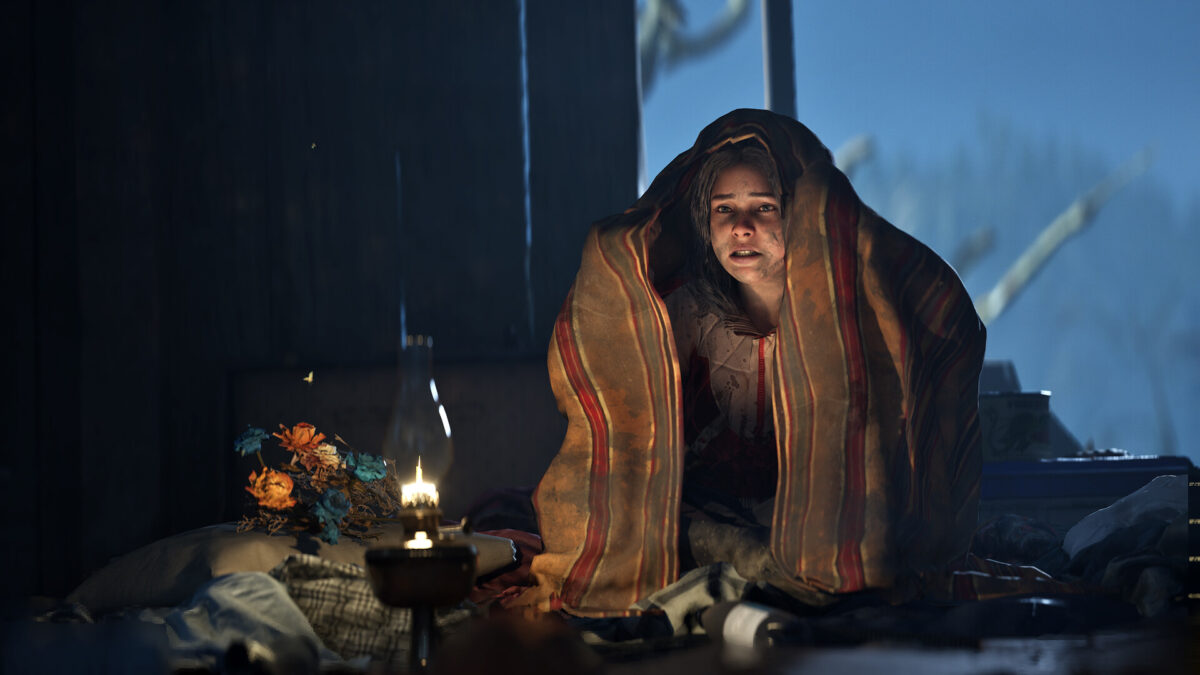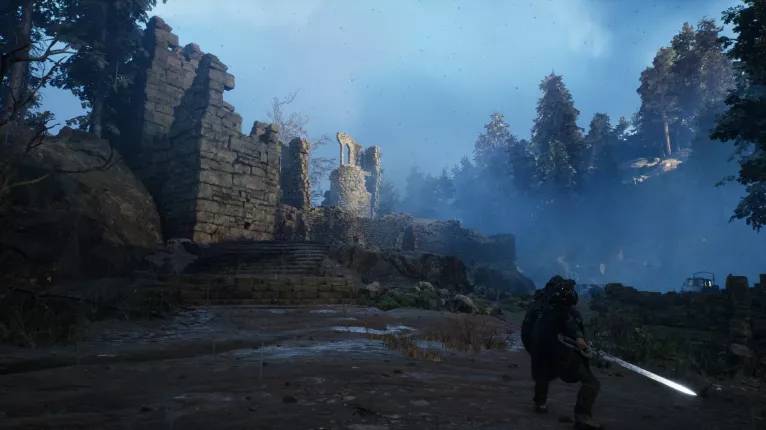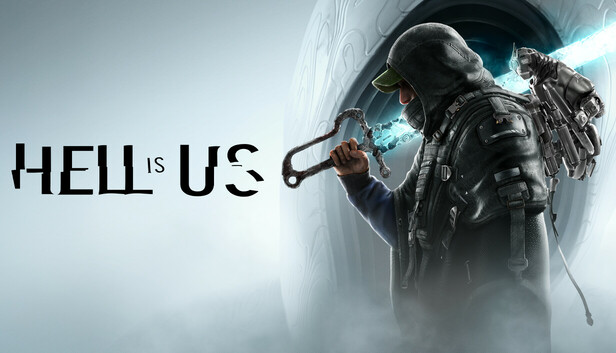I’ll be honest, the first half-hour I played of Hell Is Us was deeply frustrating. I kept mashing a non-existent map button, ran in circles through a ruined city, and had absolutely no clue what the game wanted from me. It’s a game that seems designed to make you feel lost, and it’s a feeling most modern games try their best to avoid.
What’s wild is that this intentional confusion is the entire point.
Hell Is Us rips out the features we take for granted—the GPS, the compass, the glowing objective markers—and forces you to rely on your own eyes and instincts. It’s a bold design choice at a time when the discourse on difficulty in gaming is rife, and it won’t be for everyone. But it’s the key to everything that makes this game feel so different and, at times, so brilliant.
Hell is Us Review
A Haunting World, A Hazy Story
The game’s hands-off philosophy extends to its narrative. You play as Rémi, a man returning to his isolated, war-torn home country of Aramat years after a brutal civil war forced him to flee. His goal is personal and desperate: to find his parents, who vanished during the conflict.

Complicating things is the “Calamity,” a mysterious, supernatural event that has blanketed the nation, spawning monstrous creatures known as “Revenants” that now stalk the ruins. These beings seem drawn to violence and look eerily similar to ancient statues and effigies of the country’s deities.
Much like its navigation, the story is something you have to piece together yourself. There are very few traditional cutscenes. Instead, the narrative is delivered through cryptic descriptions on items you find, scattered diary pages, and environmental storytelling. You might find a barricaded home with a desperate note scrawled on the wall, or a military checkpoint littered with clues about a squad’s final moments.
The game is more interested in building a thick, oppressive atmosphere and a sense of mystery than in telling a clear, character-driven plot. While Rémi’s quest is a solid starting point, the story raises far more questions than it answers, leaving the true nature of the Calamity and the fate of his parents shrouded in ambiguity.
Puzzles That Demand Your Full Attention
The “no-map” design is the foundation for the game’s best feature: its puzzles.
These aren’t just simple side activities you complete for a piece of loot; they are the primary gates to your progress, deeply woven into the fabric of the world itself. The game doesn’t just ask you to solve a puzzle, it asks you to first recognize that you’re even looking at one.

This is absolutely a game that encourages you to keep a real-life notepad handy, because it refuses to do the remembering for you. For instance, in one area, you might find a series of locked doors, each marked with a strange sigil. There are no obvious keys or levers nearby. The solution might lie several streets away inside a bombed-out church, where a collapsed mural depicts those same sigils in a specific order, telling a visual story of the Calamity.
The game expects you to not just see the clue, but to understand its context, sketch it down in your notes, and apply that logic back at the doors.
Another puzzle might have you entering a derelict library where moonlight shines through a hole in the ceiling, illuminating a specific symbol on the floor. The solution involves finding and rotating a series of massive statues in the room so the items they’re holding—a sword, a book, a scale—cast shadows that align perfectly with the illuminated pattern. There are no glowing hints or button prompts; the logic is purely visual. The “Aha!” moments that come from piecing these environmental clues together, sometimes an hour after you first discovered them, are immensely satisfying and make you feel like a true digital archaeologist.
How It Plays: A Mix of Discovery and Desperation
So what are you actually doing when you’re not solving puzzles? The gameplay is a deliberate, methodical mix of exploration and combat that demands patience and rewards observation.
Exploration and Your Multi-Tool Drone: Since you have no map, getting around is a constant, engaging challenge.
You learn to navigate like you would in a real, unfamiliar place, using landmarks like a clock tower or a crashed bus to build a mental map of the world. Your small deployable drone is your single most important tool. While it’s perfect for scouting ahead to count enemies or find hidden paths, its utility runs much deeper.
By finding hidden upgrade components, you can equip it with new modules. One, the “Kinetic Pulse” module, lets it emit a high-frequency blast to temporarily stun enemies, but this drains its regenerating battery core, forcing you to use it tactically. Another, the “Circuit Overload” module, lets it interface with panels to reroute power, allowing you to disable automated turrets or unlock electronically sealed doors, opening up new avenues for exploration and puzzle-solving.
Combat, Weapons, and the “Healing Pulse”: When you do have to fight, the combat is third-person, melee-focused, and unforgiving. Every swing of your weapon, dodge-roll, and block consumes a significant chunk of your stamina bar, preventing you from simply spamming attacks and forcing a more thoughtful approach.

Beyond just dodging, there’s a high-risk, high-reward parry system. Timing it perfectly will deflect an attack and open the enemy up for a devastating riposte, but a failed parry will drain your stamina and leave you dangerously vulnerable. While a simple stealth system allows you to crouch and perform a powerful opening backstab, most encounters will end in open combat.
The game allows you to find and specialize in several weapon classes, from quick one-handed swords ideal for fast strikes, to heavy two-handed axes that stagger foes but leave you open, to long-reaching polearms great for keeping enemies at a distance. You can upgrade your favorite weapons at workbenches using scavenged materials like “Corrupted Filaments” and “Machine Scrap” to increase their damage or add passive buffs.
The true genius here is the “Healing Pulse” system. There are no health packs. The only way to heal is to land attacks.
Imagine you’re down to a sliver of health, cornered by two creatures. In most games, you’d be desperately looking for an escape. In Hell Is Us, the only way out is through. You have to take a risk, parry an incoming attack, and land a combo. With each satisfying thwack of your axe, you’re rewarded with a green flash and a visceral sound cue as a chunk of your health bar refills. It turns desperate situations into thrilling, aggressive comebacks.
Unfortunately, the system’s brilliance is held back by a major flaw; a stark lack of enemy variety.
You’ll primarily fight the same handful of “Revenant” archetypes: a basic shambling melee attacker, a faster “Stalker” that tries to flank you, and a rare, heavily armored “Juggernaut” that requires precise parries or a drone stun to even damage. Their attack patterns become predictable, which eventually drains the tension from encounters that should be terrifying.
The Final Verdict
So, should you play Hell Is Us?
This is a game for a specific type of player. If you’re patient, love to explore, and get a huge kick out of solving clever puzzles without any help, then you should absolutely give this a shot. It’s a bold and refreshing experience that feels very different from most modern games.
However, if you have limited gaming time, get frustrated easily by being lost, or are looking for a game with deep and polished combat, you might want to pass on this one. It’s a game that asks a lot from you, and if you’re not willing to meet it halfway, it won’t be a good time.
Pros:
- A truly unique and immersive exploration experience.
- Clever and rewarding environmental puzzles that respect your intelligence.
- The drone is a versatile and essential multi-tool for exploration and combat.
- The “Healing Pulse” combat mechanic is a brilliant twist.
- A fantastic sense of atmosphere.
Cons:
- The lack of a map will be very frustrating for some players.
- Combat can feel stiff, despite solid core mechanics like parrying.
- The minimalist story feels underdeveloped and lacks a satisfying conclusion.
- Not enough enemy variety makes combat repetitive.






